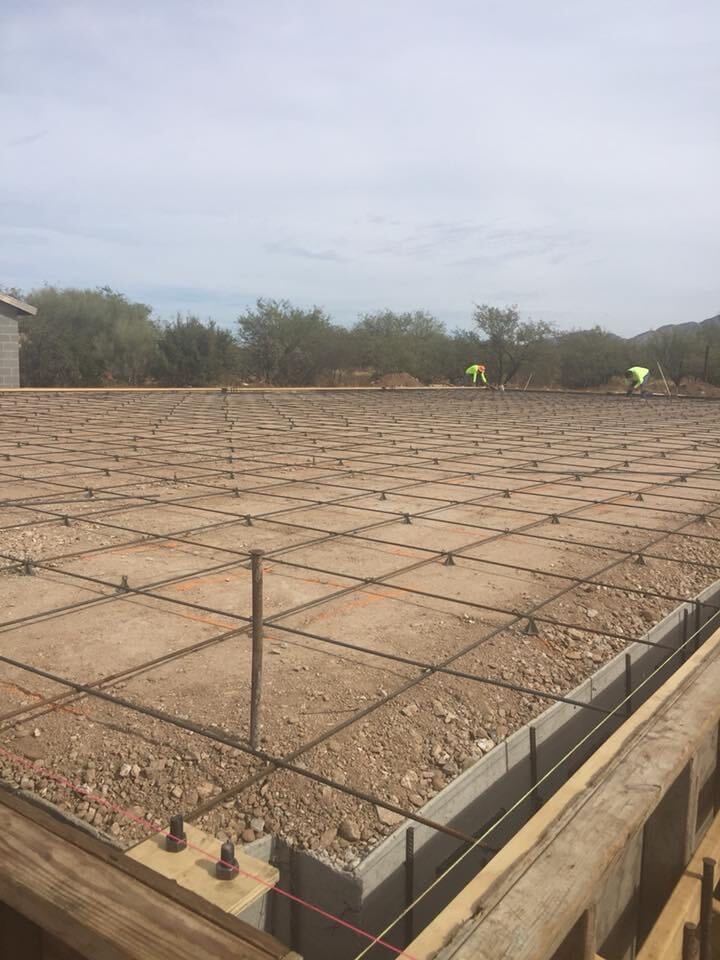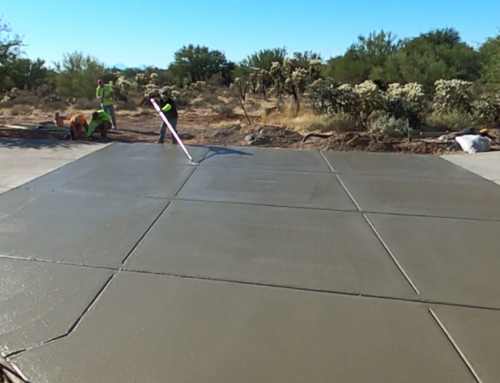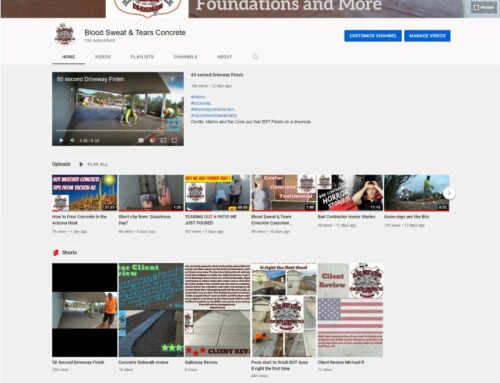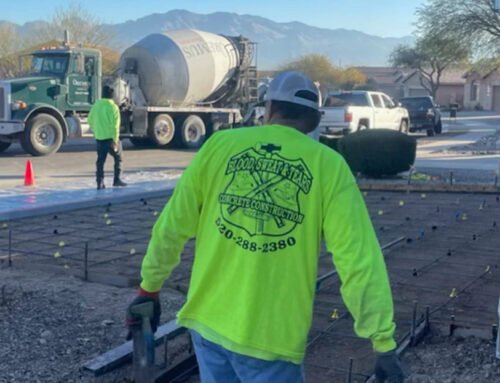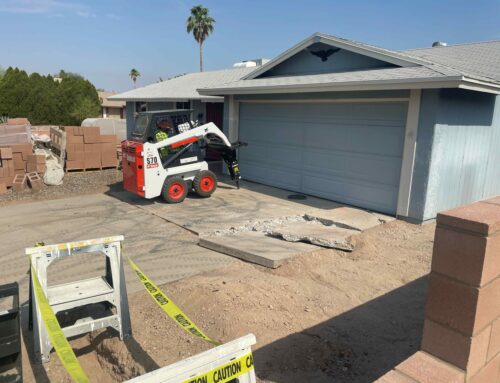Concrete is hard to the point of being almost brittle when matched against the forces of nature. That is why reinforcing is important. In the short term concrete holds up fine on its own but as time goes on certain forms of reinforcing can help to extend the life dramatically.
You may have heard a few different ways of reinforcing concrete. Here are the main three explained:
Fiber reinforcing
Also known as fibermesh consists of strands of fiberglass mixed into the load. There are large strands that are close to the size of a match stick all the way down to thin micro fiber that more resembles strands of hair.
We use fiber. Not for any long term benefits but just to get through the critical first few days after pouring while the concrete is shrinking. It seems to hold it together quite well. Once the concrete is cured it doesn’t seem to do much. Breaking concrete with fiber in it doesn’t seem any different than concrete without.
Welded Wire Fabric
Also known as wwf, or wire mesh is made up of heavy wire from the size of a coat hanger up to ¼ of an inch for most residential applications. The strands are welded together in a grid 4”-6” on center. The mesh comes in sheets or rolls. It is laid out flat within the form work before pouring.
We do not use mesh. As the concrete is poured the idea is to lift the mesh up into the concrete. The problem is that we walk back out into the concrete to screed the surface and walk the mesh back down where we step. At best you end up with your mesh undulating up and down throughout the slab. In my opinion you are more likely to end up with cracks with mesh than without. It does help to hold the concrete together over time though and really slows down the process when jackhammering to remove.
Rebar
Rebar comes in many sizes and hardness’. For your residential project you will most likely be dealing with #3 or #4 rebar. #3 is 3/8” in diameter and #4 is ½” in diameter. Most plans will call for 40 or 60 ksi which represents how hardened the rebar is.
When paired with the proper height plastic rebar stand or chair this is our preferred way of reinforcing. The rebar is tied together with wire and then clipped into a saddle on the rebar chair. We normally go with a 20” on center grid of #3 with #4 around the perimeter. For 4” slabs we use a 1.5” chair so the bottom of the rebar is 1.5” off the base. This way the rebar is in place before we pour and little effort is needed to assure it will be placed properly in the concrete to do it’s job. Over time nothing beats rebar for holding your concrete together. Cracks happen but rebar keeps them tight.
I hope this helps to clarify reinforcing for your Tucson AZ project. Please look through the blog and learn as much as you can before starting your project.
Thank you for taking the time!

